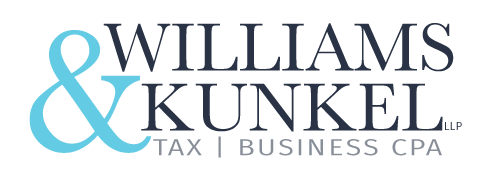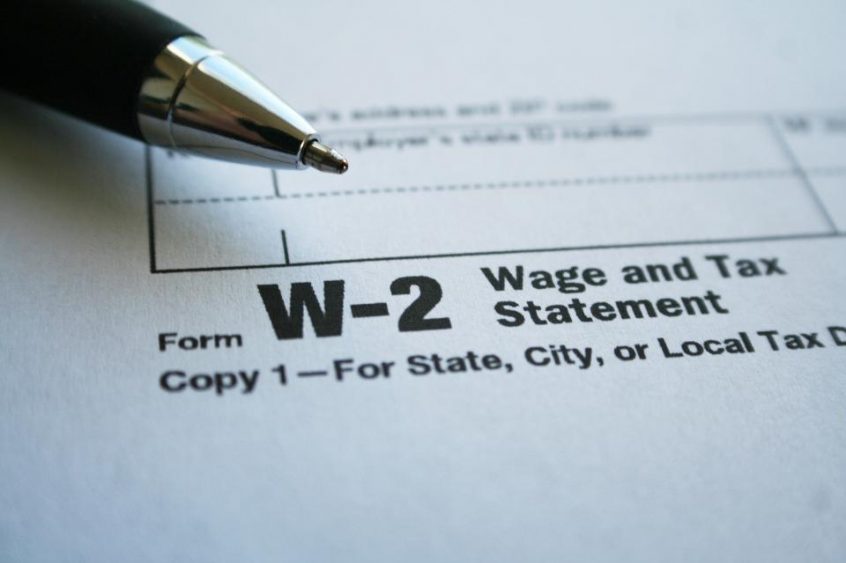Minimizing taxes may be the difference between a profitable business and one that is just getting by. You all are probably thinking: “I don’t have extra time do deal with taxes.” Here are seven ways you can tame the stress of small business taxes and hopefully put a little (or a lot) more money back in your pockets.
1. Tax Software Is Your Buddy
Let’s be honest. Tax planning software is a must for small business owners. Using tax software like Turbo Tax or something similar will make preparing and filing your taxes online much easier.
Ditch the paper. The IRS has reported less than 1% of online tax returns have errors. That number skyrockets to 21% when you file using paper returns.
If this sounds like too much work, hire a tax professional, and maybe a bookkeeper. Even with the best CPA, if you don’t have the right info about your expenses, you will pay more in taxes. All those small, missed deductions can really add up.
2. Follow Your Spending To Track Deductions
Keeping track of your spending is easier than ever these days but it can still seem daunting to some. Most credit cards will send you a year in review and all of your bank transactions are available online. While online banking has made things a lot easier, there is still plenty of room to miss things. Use additional software like Quickbooks or Quicken so that you will have one more opportunity to catch all deductible expenses.
Using software like Quicken or Mint to track your spending throughout the year can make this process much easier. A little time here and there will surely be less painful than organizing hundreds, if not thousands, of receipts all at once. Be sure to attach your bank accounts and credit cards to the software so those accounts are tallied into your total spending which will allow you to keep track of it all. Doing so will allow you to click just a few buttons to produce a report of all of your spending when tax time rolls around again. Perhaps the best part of all is that zero math will be needed.
3. Pay Your Retirement Accounts First
No one has more retirement planning options than those who are self-employed and small business owners. For those who fit into one or both of these categories, you still have access to a Traditional IRA like everyone else, capping at $5,500 per year. This type of IRA can also be combined with retirement plans like a 401(K) or SEP IRA thereby allowing you to contribute up to $55,000 per year. Contribution limits are even higher for those of you over 50. Stack a 401(K) with a Cash Balance Pension Plan and you may be able to put away closer to $150,000 per year .
When you are income-wise you can lower your tax bill. Contributions to the above-mentioned plans will get you a tax deduction. This can be huge for businesses that are trying to keep the new pass-through entity tax break.
If your taxable income exceeds a threshold of $157,500 for single filers and $315,000 for joint filers, the deduction is reduced pro-rata under the “phase-in rule.” The phase-in is complete when income reaches $207,500 for single filers and $415,000 for joint filers. If you find yourself above these upper thresholds, you unfortunately won’t get the pass-through deduction—period. But making contributions to retirement accounts will reduce your taxable income, and maybe get you back below these income thresholds thereby qualifying your business for the new 20% pass-through tax break. Double Win!
4. Deduct Your Home Office
Too many people who work from home are afraid of taking the home office deduction. If you work from home at least look at if you qualify for this tax deduction. You may be surprised by how much money you can save.
5. Stop Ignoring Your Auto Expenses
You may not be aware of this, but you can deduct your auto expenses when used for business.
What percentage of your car’s mileage is attributable to your business? Whatever the number may be, you can apply that percentage to your auto expenses for the year. For those of you who hate crunching numbers, I’m sorry. I can’t completely remove math from your life.
The IRS provides two ways to calculate this deduction. First, track your actual expenses. Then deduct the percentage of usage that is tied to your business. Second, track your actual mileage and take a tax deduction for those miles. Keep in mind that the rate is 54.5 per mile for 2018.
Let’s say you drive a Range Rover. You pay $1500 per month to lease it and drive 10,000 miles a year of which 80% of that 10,000 is driving for work. Using actual expenses, you would end up spending $18,000 in lease payments for the year plus gas and other maintenance. If you only listed the yearly total of your lease, you would end up with about a $14,400 tax deduction. Compare that dollar amount to if you decided to use the standard mileage rate deduction. That total would only be $4,360!
For the Prius driver with a $200 per month payment, the math will be much different. Using the same 10,000 miles a year with 80% of that total used for business, which deduction do you think will be better? Using actual expenses, you would be able to deduct $1,920 plus 80% of gas and maintenance. On the other hand, if you chose the mileage deduction you would end up with a much larger deduction somewhere in the neighborhood of $4,360.
Yes, tracking all of this stuff will take a little time. But how much time would you need to work to earn the comparable tax savings? More time that it will take to track your mileage. There are even apps now to help you do it.
6. Employ Family Members
Does your spouse help with paperwork or bookkeeping? Consider paying him or her for time spent. It could help your spouse understand more about the business and be more supportive of all your hard work. It may also have some additional tax benefits in certain cases.
Many business owner parents have also been known to hire their children. Typically, children will be in a lower tax bracket, so paying them for work may help reduce the overall tax burden for the family.
For extra credit have them open a ROTH IRA with their earning. Imagine what compounding interest could do for investment opened as a teenager. If your child put away $5500 for just 3 years from 15 to 17 into a ROTH IRA. Never contributed again and earned 10% per year until 70 how much would you have? Contributing just $16500 would turn into a whopping $2.5 million dollars.
7. Track Your Carryover Tax Deductions
For those of you whose eyes just glazed over, we’re talking about deductions for things like capital losses, net operating losses, home office deduction or even large charitable donations. These are a few deductions or credits, that when not fully used in one year, may be carried forward to a future year.
Who remembers tax info from last week, let alone previous years? These things have a way of slipping through the cracks, especially when switching tax preparers. Make a note or track these deductions so you don’t forget them the following year.
Small business ownership is hard enough without having to stress about all this tax filing stuff. Do yourself a favor and break up the accounting throughout year and let software do most of the heavy lifting. Before you know it, tax season will be a breeze and you will have forgotten why it always used to stress you out. Hopefully a lower tax bill will come your way as well.
Call Williams & Kunkel CPA today in Flower Mound at 972-446-1040 to have a chat about your small business tax health.
In addition, you can connect with us to receive updates throughout the business week by following us on Twitter or LinkedIn or liking us on Facebook.
Source: Forbes

